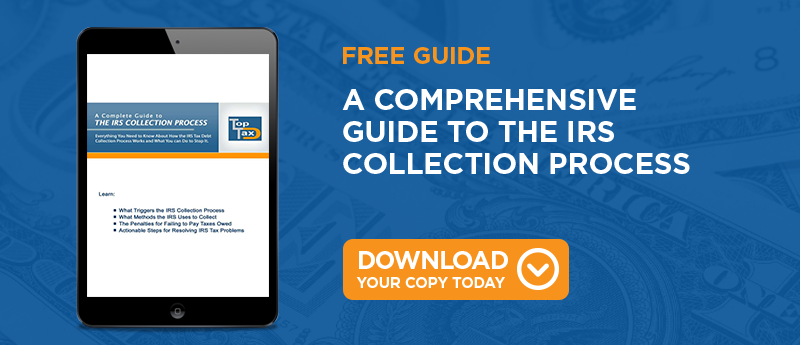
Editor’s Note: This post was originally published in January 2017 and has been updated for accuracy and comprehensiveness.
The IRS can use a host of methods to collect on your back taxes. It can levy your assets, put a lien on your income, and use other means to recoup your government debt.
However, you may wonder what methods you can use to find relief from the IRS's collection efforts. When you owe back taxes, you can use any of these four options for obtaining tax debt relief.
Offer in Compromise to Combat Back Taxes
When you can pay some but not all of what you owe the IRS, you may seek tax debt relief by making an offer in compromise, or OIC. An OIC allows you to make an offer to settle your tax debt for a reasonable amount that reflects the money you have on hand as well as assets you have in your possession.To make an OIC, you must mail an offer containing the required forms, fees and documentation to the IRS for review. Because the IRS accepts less than half of OICs submitted each year, you will likely have a better chance of your offer being accepted if you have a tax professional to help you verify your qualifications and navigate the rules and requirements of the program.
Payment Agreement
If you are turned down for an OIC or can't pay the full amount you owe all at once, you can ask the IRS for a payment agreement. The IRS offers both short and longer term payment agreements, but they both allows you to make payments over an extended period based on what you earn each month. The payments that you make each month will be set up to be affordable and reasonable according to your current income.It is important that you make your payments on time in full when the IRS sets you up on an installment agreement. If you default on this form of tax debt relief, you could be required to pay the rest of your debt in full. You also may be turned down for future payment agreements.
Currently Not Collectible Status
If you have a limited income and few to no assets, you may ask the IRS to put your tax debt into Currently Not Collectible status, or CNC. The CNC status allows people facing financial hardship to hold off on making tax payments until their situation improves. However, this option will be less likely if you have assets like stocks, insurance policies, or other valuables that can be liquidated to settle your account.
When your tax debt is put in CNC status, it will still accrue interest and penalties, which will continue to raise the amount that you owe the IRS. Additionally, the IRS may keep your tax refunds in future years to apply to your tax debt. You will also be expected to pay off the debt when you have the means to do so. The IRS will regularly review your finances to determine if you can pay your debt.
Penalty Abatement for Back Taxes
The IRS will often attach penalties to people's delinquent tax debts. The penalties combined with the actual tax debt can be large enough that you may find it difficult to satisfy in full.
However, if you can show that you did your best to comply with tax laws but couldn't because of circumstances out of your control, you may qualify to have some of your tax penalties removed. This form of tax debt relief is allowed for people who:
- Received bad written or oral advise from an IRS agent, tax preparer or advisor
- Could not get records or file in a timely manner for reasons outside your control
- Suffered a disaster like a tornado, fire, earthquake, or flood
- Do not have prior years' tax penalties to pay off
To request this form of tax debt relief, you must be current in filing your prior three years' worth of tax returns. You also must be current or have paid in full all prior years' tax debts.
Paying what you owe the IRS can be a challenge if you have limited financial resources. You can request tax debt relief using any of these four available options.




